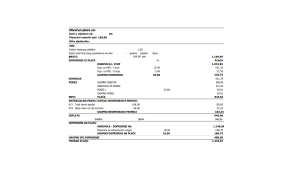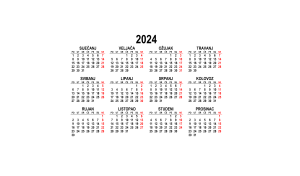The average salary in Croatia is a topic that receives a lot of attention due to the period of strong inflation. For the majority of employees, it is one of the indicators of inequality and well-being. According to the data of the Croatian Bureau of Statistics, the average salary in Croatia in September 2023 has increased on an annual basis, but it has decreased slightly compared to the previous month (August).
In addition to the average salary, you might be interested in available vacancies. Check their offer at Štoradiš.hr, which offers an AI analysis service that tells you which jobs best suit your CV.
Unhappy with your salary? Look for a new job!
1. Average salary in Croatia
According to the latest available data (September 2023), the average net monthly salary in Croatia was 1,156 euros, which is nominally 0.6%, and in real terms 1.1% lower than in August 2023.
The average gross monthly salary in Croatia was 1,596 euros, which is nominally lower by 1.1% and 1.6% lower in real terms compared to August 2023.
However, at the annual level, the net salary for September 2023 compared to the previous year is nominally higher by 14.2% and in real terms by 7.0%, and the gross salary is nominally higher by 16.5% and in real terms by 9.2%.
Looking at the entire period from January to September 2023, the average monthly net salary was 1,133 euros, which is nominally higher by 12.5% and real by 3.2% compared to the same period in 2022. Also, the average gross salary for the same period amounted to 1,564 euros, which is nominally higher by 14.3% and 4.9% in real terms compared to the same period in 2022.
Average salary per hour (hourly wage) in September 2023. was 6.75 euros, which is 8.0% higher than in August, and 18.8% higher than the same month in 2022.
2. Median average salary in Croatia
The median salary differs from the average salary in that it is not the average amount of salary paid, but the value below which half of the employees receive a lower salary and half a higher salary. The difference between median and average wages indicates that their distribution is not symmetrical, which is usually the case with wages. In Croatia, the median net salary for September was 998 euros, and the median gross salary was 1,341 euros.
3. Who has the highest and lowest salaries?
According to the CBS data, the highest average monthly net salary paid was paid in air transport activities and amounted to 1,857 euros, while the lowest in the amount of 754 euros was paid in clothing production activities. Looking at gross data, the average gross paid in September 2023 for air transport was 2,692 euros, and for clothing production 987 euros.
Looking at the number of working hours, in September 2023 there were an average of 167 paid hours, which is 8.7% less compared to the previous month (as expected due to the end of the tourist season). The highest number of paid hours was in water transport and auxiliary service activities in mining (175), and the lowest in social welfare activities without accommodation (143).
4. How does the average salary depend on the location?
Average net salaries in the third quarter of 2023 (July to August) ranged from the lowest salary of 1,006 euros in the Virovitica-Podravine County to 1,343 euros in the City of Zagreb. However, the increase in salaries in Zagreb was among the lower growth rates, only 12.9 percent compared to the same period in 2022.
Only three counties had an average net salary higher than the average Croatian salary – the City of Zagreb (mentioned 1,343 euros), Zagreb County (1,168 euros) and Primorje-Gorski Kotar County (1,155 euros). As many as six counties had an average net salary lower than 1,050 euros.
Compared to last year, wages grew in all counties, with the lowest rate of 12.2% in the County of Istria and 12.9% in the City of Zagreb. The highest increase was recorded in the counties with the lowest average wages. In the Brod-Posavina County, wages increased by 16.8%, and in the Vukovar-Srijem County by 16.3%.
Conclusion
Wages in Croatia continued to grow, although not compared to the tourist season. The largest wage increase was recorded in the parts of Croatia with the lowest average wages, and the smallest in the counties with the highest average wages.
If you are worried about wage growth and inflation can check the job offer at Štoradiš.hr. By clicking on the button below, the AI system will analyze the uploaded CV and suggest jobs that best suit it.
Inform yourself and check the available vacancies today!





